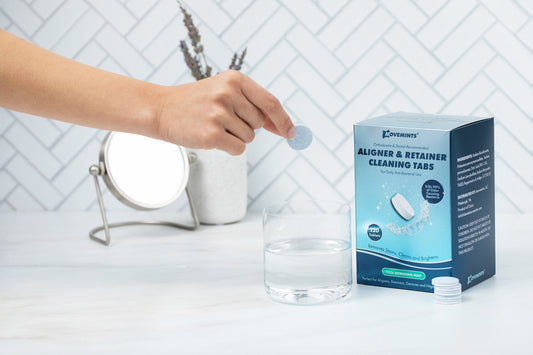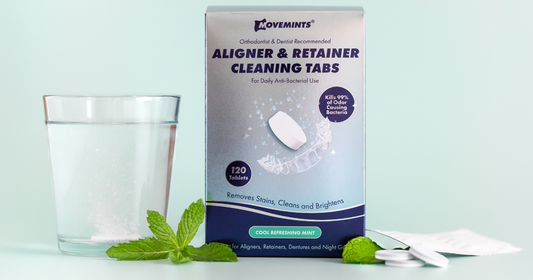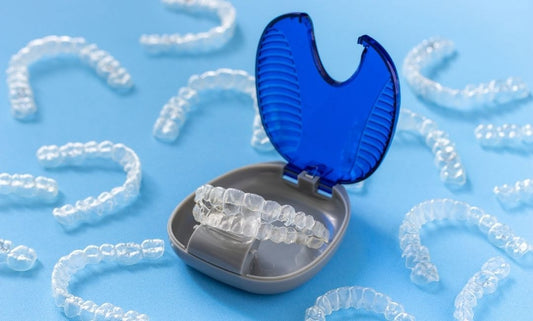How to Treat Invisalign Pain and Discomfort
Invisalign is a popular orthodontic treatment and an excellent alternative to traditional braces. While clear aligners are less noticeable and offer superior comfort to their metal counterparts, many people still experience Invisalign pain and discomfort during treatment. Fortunately, the pain can be managed and except for extreme cases, should lessen during the course of your smile journey.
To help you cope with Invisalign pain, we created this guide to help you get some relief and experience a more comfortable treatment.
What Are the Causes of Invisalign Pain?
The primary reason that Invisalign hurts is simple: moving your teeth is hard work! They are part of your jaw structure and are rooted in bone (but not set in stone, thankfully!). When you wear clear aligners, you are forcing your teeth into new positions with successive aligners that you wear for 22 hours each day for six months or longer.
The process of moving your teeth also changes your eating, drinking, chewing and swallowing patterns quite substantially. This throws your normal routine into disarray, which changes your bite pattern and causes you to chew in different ways. This can put pressure on teeth that aren’t normally accustomed to the pressure required to process the food that you eat, resulting in gum pain and soreness.
The last cause of Invisalign pain comes from the clear aligners themselves. They are tight, hard, and simply not comfortable. If you didn’t feel some discomfort while wearing them, you’d probably wonder if they were working at all!
How Long Does it Take for Invisalign to Stop Hurting?
Over the course of your treatment, the aches and pains associated with straightening your teeth will subside. But you may experience a spike in Invisalign pain in the first few days of a new set of aligners. As your teeth and gums become used to the changing bite patterns, you will experience relief from these discomforts.

Sometimes, you’ll notice a specific area of pain that you didn’t experience before. This can be caused by rough spots in your aligners that can be relieved with dental wax or, in extreme cases, smoothing that rough spot with a nail file. That is one technique for Invisalign pain relief that requires some caution; you don’t want to warp or bend your trays, so it’s best to ask your provider if they can smooth down those rough spots for you.
How Can I Make My Invisalign Less Painful?
While most patients will experience minor pain from Invisalign, it helps to know some techniques to relieve your discomfort. Here are some techniques that you can use that don’t require a visit to the orthodontist.
Drink Cold Water or Suck on Some Ice Cubes
To reduce inflammation and provide relief for Invisalign pain, try swishing some cold water around in your mouth. The cold water can provide your sore mouth with some extra relief. Avoid attempting this technique with juice or soda, as consuming these sugary drinks can increase your risk of developing tooth decay.
Sucking ice cubes can also relieve Invisalign pain. If you experience pain after removing your aligners, it may be helpful to start sucking on an ice cube while you are cleaning your teeth or before and after you eat. A cold compress or ice pack placed on your cheeks can also help soothe your gums and jaw.
Avoid Hard or Crunchy Foods that Increase Invisalign Pain & Soreness

Hard and crunchy foods can, unsurprisingly, worsen Invisalign pain and discomfort. While it might be hard to say goodbye to your favorite dish of nachos or your go-to snack of pretzels, doing so is important for maintaining your comfort levels. In order to make living with Invisalign more tolerable, hard foods such as jawbreakers and hard-shelled bread should also be avoided, as they can crack or chip your teeth. Other foods we recommend avoiding include:
- Hard candies such as Jolly Ranchers or peppermints
- Seeds
- Nuts
- Uncooked carrots
Of course, you shouldn’t avoid chewing altogether. In fact, mild chewing can help relieve discomfort while wearing your aligners. This is why many orthodontists recommend using Invisalign chewies during treatment, but they aren’t convenient to use when you’re on the go. That’s why we created Movemints clear aligner mints as an alternative to Invisalign chewies. Our Xylitol Mints have a patented groove that helps you seat your trays and are sugar-free with a therapeutic dose of xylitol to freshen breath and fight Invisalign dry mouth!
Smooth Over Any Rough Edges on Your Trays
Some patients experience irritation and abrasion from the edges of their Invisalign trays. While this usually only happens during the beginning of their treatment, it can still be frustrating to deal with. To alleviate pain caused by sharp or rough edges on your invisible aligners, ask your orthodontist if they can smooth them over. Alternatively, you can attempt to file your trays at home with a nail file or emory board, but be extra careful so as not to bend or warp your aligners.
A better alternative to do-it-yourself filing is to use wax for Invisalign to cover the rough edges of your trays. Take a small bit of dental wax and roll it between your fingers to soften it up, then apply it to the area(s) causing the abrasions or pain before you reinsert your trays. This little trick can be most effective at treating invisalign pain and won’t risk altering the efficacy of your aligners.
For mouth sores and abrasions, try swishing with a peroxide mouthwash. These act as oral debriding agents and can provide refreshing relief for sore spots while also cleaning and disinfecting any wounds. Peroxyl is a popular brand, but there are a few on the market that will do the trick!
Try Over-the-Counter Pain Relief
Whether you are suffering from sharp headaches or irritating cuts as a result of your aligners, you may be able to find some relief by taking over-the-counter pain medications. Tylenol, aspirin, and ibuprofen are some of the most effective medications for treating Invisalign pain and headaches. Anti-inflammatory medication such as aspirin and ibuprofen are also proven to reduce swelling in the gums and mouth tissue. Taking pain medication hours before switching to new aligners can also prevent the onset of pain that these changes usually bring.
Mitigate Your Invisalign Pain By Chewing Movemints Clear Aligner Mints
As we mentioned before, light chewing can actually help relieve your pain. Normally, people might chew on some gum. However, sugar chewing gums can increase one’s risk of developing cavities. You would also have to remove your Invisalign in order to chew the gum.
Thankfully, you don’t have to decide between taking off your Invisalign in an effort to relieve pain and forcing yourself to just push through it. Dental Movemints are a safe, sugar-free alternative to traditional chewing gums and mints. Not only do they give you a healthy dose of freshness, but they also act as an effective pain reliever. Users can reduce their discomfort by chewing on these unique xylitol mints while also keeping their aligners on.
Our xylitol mints were developed by an orthodontist specifically for his Invisalign patients and are simple to use. Just place our xylitol mints between your top and bottom trays using the patented groove and chew gently to seat your aligners. Seating your aligners ensures they fit appropriately on your teeth for maximum effectiveness. You may need to apply gentle pressure until you feel like your aligners are seating correctly; gently chewing them for a short period of time will help you treat your Invisalign pain while giving you fresh breath and more smile confidence!
We hope these tips will help you deal with the pain and discomfort you might experience during your clear aligner treatment. Just know that it’s worth it, because in the end you’ll have a smile you love and cherish forever!
Get answers to all your questions about clear aligner treatment by reading more posts on our Invisalign Tips and Tricks blog.






